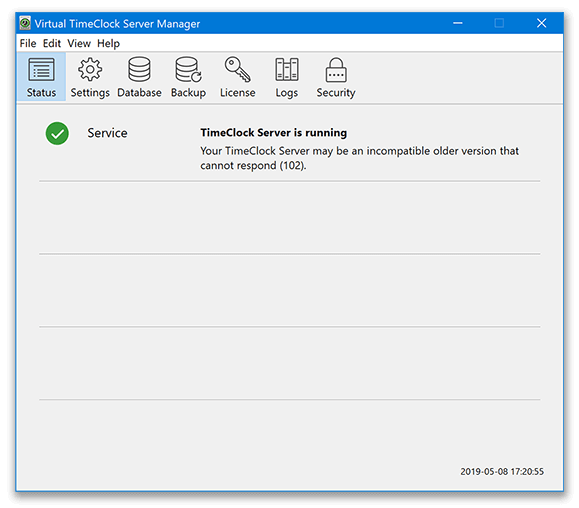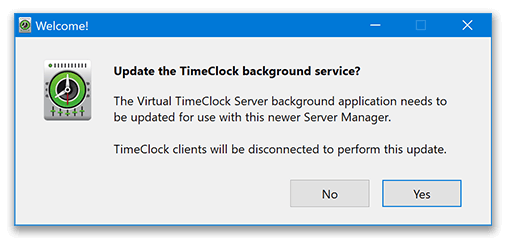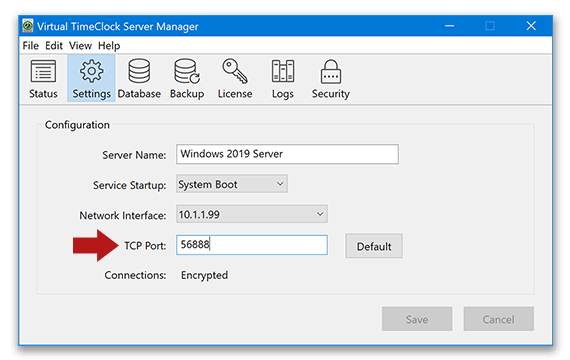Virtual TimeClock Support Blog
TimeClock Server Cannot Respond (102) Message
Occasionally we hear from a Network Edition user who is receiving a message that says: Your TimeClock Server may be an incompatible older version that cannot respond (102). This message may appear on the client or the Server Manager program. This article will provide information about troubleshooting this issue.

Understanding the Issue
This message indicates that the client and/or the Server Manager (see image below) was able to connect to a program running at the specified address and port, but was disconnected for an unknown reason. The most common reason for this issue is that the TimeClock Server is an older version that cannot communicate with the newer software. It's also possible that the program running at the specified address and port is not a TimeClock Server, but another program altogether.

Updating the TimeClock Server
If you recently upgraded your TimeClock Server, and did not properly uninstall the older TimeClock Server, you will need to remove the old background service to finish your upgrade. To fix the issue, follow the steps below:
- Close the TimeClock Server Manager and reopen the program.
- If you are prompted to Update the background service, click Yes.
- Once the background service is update, check the Status tab to make sure everything is online.

If you do not have the option to update the service and you cannot remove the background service from the File menu, you will need to reinstall the old version of Virtual TimeClock Server and follow the steps in our Uninstall Virtual TimeClock Server article to properly uninstall the older version before upgrading to the newer TimeClock Server.
Changing the TCP Port
If the above scenario does not apply to you because you have not recently upgraded your TimeClock, there may be a TCP port conflict on your TimeClock Server computer that is preventing communication. This can happen when another program uses the default TimeClock port of 56777. Follow the steps below to change the TimeClock Server TCP port and allow communication on the network:
- Open the Virtual TimeClock Server Manager program and choose the Settings tab.
- Change the TCP Port to a new port in the private port range, between 50000 and 60000. For example 56888.
- Click Save to apply the setting.

- Select the Status tab and make sure each component is online.
- Update the existing Windows Firewall rule or create a new TCP rule.
- Update your TimeClock clients with the new port number to reconnect.
Concurrent Connection Limit
If your TimeClock Server is on a standard desktop operating system (Windows 7, 8 and 10 or macOS Sierra, Mojave, etc.), you may be running into concurrent connection limits that are enforced at the operating system level. While Virtual TimeClock does not limit the number of clients that can connect to your TimeClock Server, non-server operating systems impose limits on the number of incoming connections to a given computer. Find our more by reviewing our Concurrent Connection Limits support article.
If none of these troubleshooting steps solve the issue you are experiencing, please contact Redcort Technical Support.